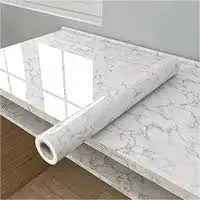- Home
- OEM Duplex Paper Manufacturing Process | High-Quality Paper Solutions
Aug . 30, 2024 08:19 Back to list
OEM Duplex Paper Manufacturing Process | High-Quality Paper Solutions
The OEM Duplex Paper Manufacturing Process
Duplex paper, known for its high brightness and smooth surface, is widely used in packaging and printing industries. The manufacturing process of OEM duplex paper involves several critical steps that ensure the final product meets the specific needs of customers. This article explores the essential stages in the duplex paper manufacturing process, emphasizing the importance of quality and efficiency.
1. Raw Material Selection
The first step in producing duplex paper is selecting high-quality raw materials. The primary materials include recycled paper pulp, wood pulp, and various additives that enhance the paper's properties. Manufacturers often opt for a combination of virgin and recycled fibers to create a sustainable product while maintaining high standards of strength and printability.
2. Pulping Process
Once the raw materials are sourced, they undergo a pulping process. This step involves breaking down the fibers through mechanical and chemical methods. Mechanical pulping grinds the wood chips into pulp, whereas chemical pulping uses chemicals to dissolve lignin and separate fibers. The choice of pulping method depends on the desired paper properties and cost-effectiveness.
After pulping, the next stage is sheet formation. The pulp slurry is fed onto a moving wire mesh where water is drained, allowing the fibers to bond and form a wet sheet. At this stage, additives such as fillers and dyes can be added to improve opacity and brightness. The sheet is then pressed to remove excess water before entering the drying section.
oem duplex paper manufacturing process

4. Drying and Calendering
The wet sheets are passed through a series of heated rollers to dry them thoroughly. This stage is crucial, as the moisture content affects the paper's final quality. Once dried, the paper passes through calendering, where it is smoothed and pressed to achieve the desired thickness and finish. This process also ensures uniformity across the entire sheet, which is vital for printing applications.
5. Coating
To enhance the paper's performance, especially for printing, it often undergoes a coating process. Coatings improve surface properties, such as smoothness, gloss, and ink absorption. The choice of coating is determined by the end use of the paper—whether for high-quality photo printing, packaging, or general printing purposes.
6. Cutting and Packaging
Once the duplex paper is coated and dried, it is cut into various sizes based on customer requirements. The final step involves packaging the sheets securely for transportation. Proper packaging is essential to prevent damage during shipping and storage.
In conclusion, the OEM duplex paper manufacturing process is a complex interplay of raw material selection, pulping, sheet formation, drying, and coating. Each stage is meticulously controlled to ensure the final product meets the high standards demanded by the industry. By adhering to quality practices and incorporating sustainable materials, manufacturers can produce duplex paper that caters to diverse needs while minimizing environmental impact.
Latest news
-
Duplex Paper Rate Per Kg – Best Manufacturer & Supplier Prices Online
NewsJul.04,2025
-
High-Quality Duplex Kraft Paper Reliable Suppliers & Exporters Top Manufacturers
NewsJul.04,2025
-
Removable Contact Paper for Kitchen Cabinets - Durable, Easy to Install, Stylish Designs
NewsJun.24,2025
-
Cupboard Decoration with Paper - Stylish Designs, Custom Sizes & Bulk Supply
NewsJun.10,2025
-
Premium Contact Paper for Table Top - Durable, Easy to Apply, Stylish Surfaces
NewsJun.10,2025
-
Contact Paper to Cover Dresser Durable & Easy Application
NewsJun.10,2025

